
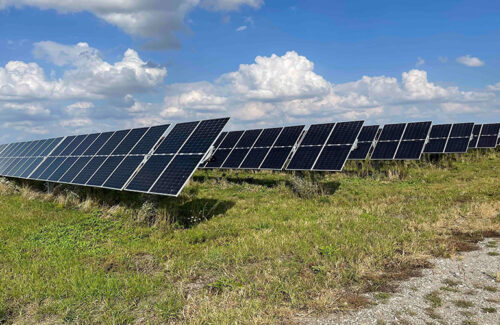
Invenergy announced that its Hardin II solar center has begun commercial operations. The Hardin II Solar Center is located in Hardin County, Ohio and will produce 150 megawatts of clean energy. As announced last month, Meta will purchase renewable energy produced by Hardin II Solar. This project represents additional power generation capacity in the region, thereby improving the reliability of the power grid in the area. Michael Kaplan, Senior Vice President of Development at Invenergy, said, "We are delighted to work with the Hardin County community and our project partners to make the Hardin Phase II solar project a success. As energy demand continues to grow, loyal partners like Meta are helping Invenergy provide more clean energy Invenergy's solar project portfolio continues to grow in Ohio. Next year, Invenergy expects Hardin III Solar to enter commercial operation, and two other solar projects are expected to begin construction in 2025.
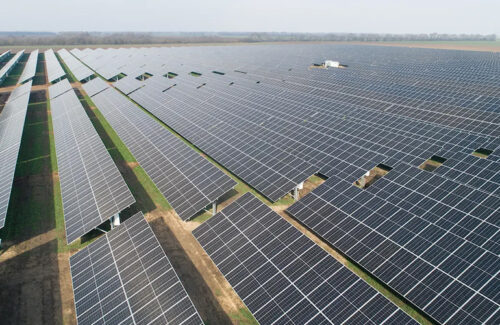
Enstall, a solar bracket group, completed its acquisition of Schletter Group, a European bracket manufacturer, last week. Enstall (formerly Esdec) entered the US market in 2018 and began acquiring a competitor's solar bracket manufacturer at the end of 2019. Stijn Vos, CEO of Enstall, stated, "This acquisition is an important step towards our mission of building a more sustainable future. Schletter's outstanding reputation in engineering, combined with Enstall's extensive capabilities, will enable us to lead innovation in the entire solar industry. We will work together to provide high-quality solutions and services that meet the diverse needs of the market, accelerating the global transition to renewable energy Like Enstall, Schletter also serves the solar building market in the United States and Europe. Schletter produces structures for inclined roofs, flat roofs, and ground mounted applications, including fixed inclined brackets and solar trackers. Schletter CEO Florian Roos said, "We are delighted to join Enstall Group. Together, we will leverage our comprehensive strengths to expand our global influence and continue to support the world's renewable energy transition. For Schletter, this is an exciting new chapter - it will enable us to scale up our business and better serve our global partners Enstall's existing companies include IronRidge, EcoFasten, Esdec installation brands, BluBase, PanelClaw, and Sunfer.
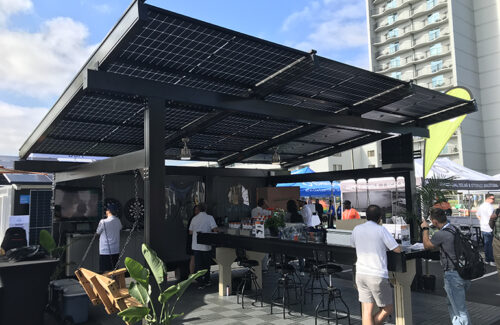
Due to the demand for these products in the residential market, the size and appearance of solar carports and canopies are changing. A new manufacturer producing a large number of solar canopies has narrowed down these structures to fit residential properties and designed them to look more like pavilions than towering carports covering parking lots and garages. Although their cost is certainly higher than installing solar cell arrays of similar size on rooftops, these solar roofs have other functions besides generating electricity. Their construction is relatively simple and can provide shelter from wind and rain for vehicles or personnel below. The biggest advantage is its secondary utilization. I think the industry underestimates people's demand for solar energy, but they just don't want to put it on rooftops, "said Aleksandr Bernhard, CEO of Pavilion Solar, a Florida based photovoltaic canopy manufacturer. The solar carport has already provided integration with accessories such as electric vehicle chargers and overhead lighting. Residential solar canopies are expanding their functionality to include items in backyard pavilions such as fans, televisions, weather resistant canvas, and even walls for enclosed spaces. These canopies fall between premium products and practical solar energy solutions. Pavilion Solar will launch EnPod in 2024, a solar powered carport/canopy certified for use in high-speed hurricane zones. Although products like EnPod can withstand wind speeds of 175 miles per hour, their structure is also inspired by Italian and Nordic design concepts aimed at naturally integrating into residential courtyards. Manufacturers now focus on aesthetic design and provide services for their carport and canopy structures that are not just factory completed. Among the five residential winners in the Solar Power World 2024 Top Product Competition, two are solar canopy manufacturers: Infinity Rack and Lumos Solar. Both companies produce canopies suitable for residential spaces. In addition, there are companies like Brooklyn Solar Canopy Co. that manufacture roofs for urban buildings. The residential solar ceiling market is still expanding. Bernhard said he founded Pavilion Solar because he couldn't find a solar canopy that could withstand the weather demands of his Florida home. But since he built his own canopy, he found that even this specific type of solar canopy has enough demand to ensure large-scale production. All of our insights come from solar installers because they are our partners, "Bernhard said. What we see from them is that more and more people are demanding the construction of carports, pavilions, and cabins around swimming pools. I don't know why this is happening, but I know that solar installers generally indicate that they are receiving more demand for such products
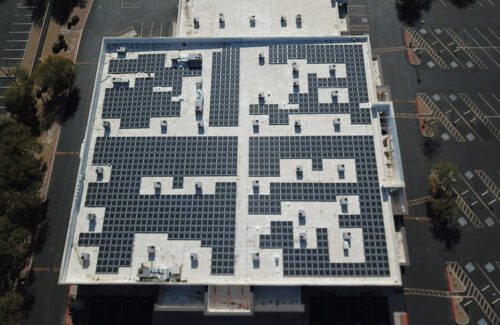
As the United States prepares for the second term of the Trump administration, the solar energy industry is facing a new era of challenges and opportunities. In an interview with Solar Power World, Wilson Chang, CEO of Sunrock Distributed Generation, a solar and storage development and management platform, discussed the current trends in the solar energy market and shared his predictions on how policy changes that the new government may take will affect the industry's future. SPW: What changes have occurred in the solar energy industry since Donald Trump's last term? Zhang: Since the last Trump administration took office, the solar energy industry has made significant progress, and distributed solar energy has now become the most cost-effective energy source in many regions of the United States. Although policies may change, the fundamentals of the industry remain strong: efficiency is increasing, costs are decreasing, and retail energy prices continue to rise. As the Trump administration enters its second term, the position of the US solar industry is much stronger than before. The production of solar panels in the United States is increasing, and with the rapid development of digitalization in the world, the increase in the number of electric vehicles, and Silicon Valley's relentless pursuit of creating increasingly powerful and energy consuming artificial intelligence, the demand for electricity is rapidly increasing. According to the Solar Energy Industry Association (SEIA), in the first six months of 2024, solar energy accounted for 67% of the newly added electricity to the US grid. Thanks to incentives from the federal government, the domestic solar manufacturing industry has grown fourfold in recent years, enabling the United States to achieve its solar deployment goals through locally produced solar panels.
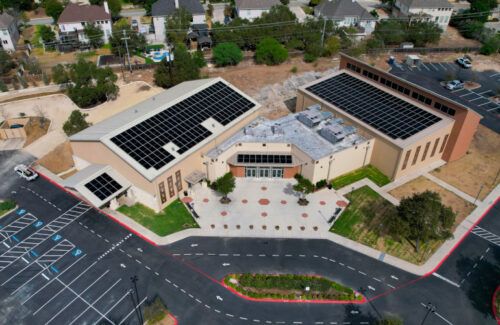
The Ismaili Muslim community in Texas is the largest Ismaili Muslim community in the United States, and has recently completed an important solar energy project. The Ismaili synagogue in San Antonio has become the first dedicated synagogue in the United States to use solar energy. This project is in line with the goal of the Aga Khan Development Network, which is to achieve net zero carbon emissions for all its global institutions and agencies by 2030. The device is completed by Big Sun Solar and is a 145 kW rooftop solar system expected to generate approximately 206289 kWh of electricity annually. This can not only reduce Jamatkhana's carbon footprint, but also strengthen the community's commitment to climate action. The adoption of renewable energy by the Ismaili Muslim community in San Antonio reflects our deeply ingrained values of caring for God's creations and demonstrating a sense of social responsibility, "said Farah Lalani of the Ismaili Council in the southwestern United States. This event is very unique because it showcases the intersection of faith, community, and sustainability, consistent with Aga Khan Development Company's goal of achieving net zero carbon emissions by 2030 Robert Miggins, CEO of Big Sun Solar, said, "We are honored to collaborate with Ismaili Jamatkhana on this groundbreaking project. This is fully in line with our mission to promote the large-scale application of solar energy by making it affordable, accessible, and accessible to everyone
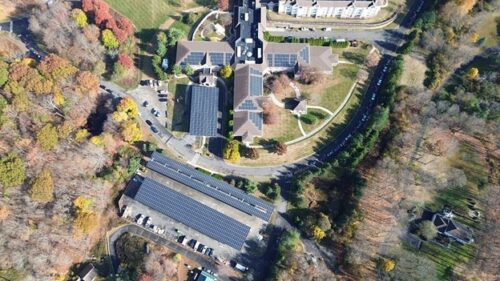
Meadow Ridge, a Continuing Care Retirement Community (CCRC) located in Reading, Connecticut, recently launched a 763 kW solar project. This is the long-term vision of the Meadow Ridge resident led solar committee, which broke ground in August with support from community ownership and management companies Senior Care Development and Benchmark Senior Living. In many ways, this is an exciting day, "said Brett Mehlman, COO of Meadow Ridge. We are all delighted because we have achieved immediate returns while investing in the future of our community and the planet. By 2025, we expect that over 20% of the electricity used in Meadow Ridge will be generated by solar power At a ceremony attended by state and local dignitaries, Melman and resident Susan Osland symbolically pressed a giant switch to power on the project. Two of the three solar arrays in this project are located on top of the carport above the employee parking lot. The third one is located on the roof of Ridge Crest, which is Meadow Ridge's subacute rehabilitation and specialized care center. I am proud that we have set an example at Meadow Ridge, "said Auslander, who is known as the" Green Grandma "for leading the Solar Energy Commission and advocating for the project. The residents, owners, and management of Meadow Ridge need a shared vision and courage to achieve this project. I would also like to thank all the partners who have helped achieve this goal The project was designed and built by Verogy, a company located in West Hartford, with funding from Eversource's Zero Emission Renewable Energy Credit (ZRECS), Investment Tax Credit, and Connecticut Green Bank's Commercial Property Assessment Clean Energy (CPACE) loan. I am delighted to collaborate with the Meadow Ridge community to implement this solar project, "said William Herschel, CEO of Verogy. This system not only embodies Meadow Ridge's dedication to sustainable development, but also highlights the achievements that can be made when ambitious individuals work together to pursue their goals. At Verogy, we are honored to help Meadow Ridge residents reduce their environmental impact while inspiring others to embrace clean energy
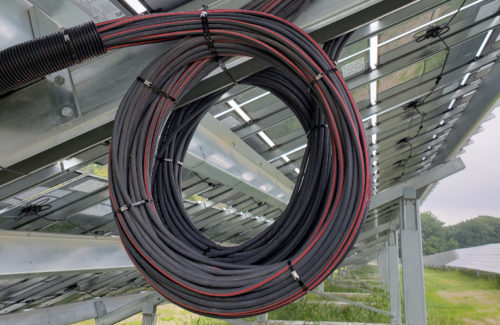
Cuyahoga County, Ohio has issued a Request for Information (RFI) regarding the upcoming 63 MW solar project in the area. Kehoga Green Energy represents the county in soliciting information from companies interested in becoming equipment suppliers for the project, which is developed under the Climate Pollution Reduction Grant (CPRG) program of the US Environmental Protection Agency. The power distribution company Cuyahoga Green Energy has received a total of $130 million in funding from the US Environmental Protection Agency, which will be used to build 63 megawatt solar power plants and 10 megawatt battery storage systems on six brownfields and/or former landfills in the Cleveland metropolitan area by October 2029. This RFI aims to identify and establish contact with manufacturers interested in providing necessary materials and services to successfully complete the project by the deadline set by the Environmental Protection Agency. Specifically, the county aims to develop these projects through competitive procurement of solar panels, bracket systems, inverters, and other related equipment, while meeting the following conditions: 1. The group must also obtain the "Build America, Buy American" (BABA) certification and comply with the "Buy American Act". 2. Solar panels must be compatible with landfill and brownfield solar development - the county is currently looking for ground mounted solar panels with ballast support systems, but is willing to consider other feasible alternatives if available. 3. Solar panels must have satisfactory conversion efficiency to accommodate utility scale solar energy within the available subsidy funds. 4. Inverters must have sufficient efficiency and reliability to minimize losses during the system's lifespan. 5. The installation hardware and panels must be able to withstand typical strong winds and increasingly severe weather events in the local area. The reply must be submitted via email to the contact person of the publishing department (Thomas Pavich, tpavich@cuyahogacounty.gov )And indicate the RFI name and number in the subject line. The deadline for reply is Thursday, February 6th, 2025 at 11am.
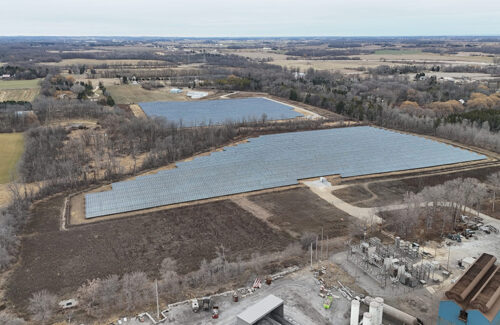
SunVest Solar, a developer of renewable energy projects, has completed the construction of a 19.5 MW solar project at its Charter Steel manufacturing plant in Sokville, Wisconsin. This milestone project is the largest meter mounted solar installation, providing clean local electricity directly to Charter Steel, Wisconsin's largest energy user. SunVest Solar CEO Bram Walters said, "We are pleased to have achieved this important milestone in Wisconsin's renewable energy sector. This project builds on our long history in Wisconsin and sets a new benchmark for solar power generation in the state. It demonstrates how solar energy can empower businesses to take control of their own energy future The project utilizes nearly 30000 solar modules and aims to provide most of Charter Steel's energy needs, supporting Charter Manufacturing's efforts to reduce environmental impact and lower operating costs. Joel Casterton, President of Charter Steel, said, "Through our partnership with SunVest Solar, we are proud to integrate renewable energy into our operations. This innovative project demonstrates our commitment to sustainability and operational excellence, while consolidating our position as a responsible leader in the steel industry
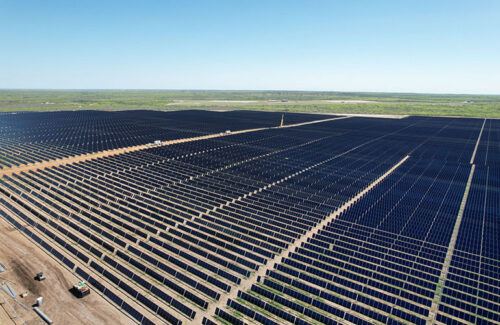
Leeward Renewable Energy (LRE) announced that its 200 MW Morrow Lake solar project has been completed and put into commercial operation. The project is located in Freeo County, Texas and will provide renewable energy to Microsoft under a previously announced long-term power purchase agreement. Morrow Lake Solar is the first of two solar facilities developed after reaching an agreement with Microsoft, and also LRE's second project in Friau County, located opposite its 200 MW Horizon Solar project. Morrow Lake Solar created over 300 job opportunities during its peak construction period, of which 112 were local employees. This project uses First Solar thin-film modules. As part of LRE's ongoing commitment to land management, Morrow Lake Solar has implemented strong measures to promote soil health, protect local plant species, and enhance biodiversity, including introducing sheep grazing to control vegetation. The project also supports various community initiatives, including educational programs and contributions to local activities such as toy driven and holiday celebrations. LRE acquired the Morou Lake solar project from Red River, a joint venture between SunChase and Eolian, in 2023, and Red River initiated the development of the Morou Lake solar project in 2017.
Categories
New Products
Tin Roof Rapid Solar Mounting System with Hanger Bolt Read More
Residential Small Solar Easy Bracket Kit for Home Balcony Read More
Automatic Single Pile Solar Tracker with 10 PV Panels Read More
Angle Adjustable Aluminum Easy Solar Panel Bracket for Garden Read More
Intelligent Single Post Dual Row Solar Tracking System Read More
5000ES Solar Off-Grid Energy Storage Inverter Supplier Read More
Multi Drive Double-Sided Single Axis Tracker System Read More
© Copyright: 2025 Xiamen Wintop New Energy Tech Co., Ltd.. All Rights Reserved.

IPv6 network supported
Friendly Links:
Integrated Solar System